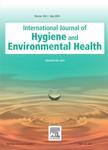版权所有:内蒙古大学图书馆 技术提供:维普资讯• 智图
内蒙古自治区呼和浩特市赛罕区大学西街235号 邮编: 010021

作者机构:Univ Cent Florida Dept Civil Environm & Construct Engn Orlando FL 32816 USA Univ Penn Dept Biostat & Epidemiol Philadelphia PA 19104 USA Colorado State Univ Nat Resource Ecol Lab USDA UV B Monitoring & Res Program Ft Collins CO 80523 USA Chinese Acad Sci Inst Geog Sci & Nat Resources Res Beijing Peoples R China
出 版 物:《INTERNATIONAL JOURNAL OF HYGIENE AND ENVIRONMENTAL HEALTH》 (国际卫生与环境保护杂志)
年 卷 期:2010年第213卷第5期
页 面:359-368页
核心收录:
学科分类:12[管理学] 1204[管理学-公共管理] 120402[管理学-社会医学与卫生事业管理(可授管理学、医学学位)] 1004[医学-公共卫生与预防医学(可授医学、理学学位)] 10[医学]
主 题:UV-B UV exposure Skin cancer incidence Skin cancer risk Melanoma risk Satellite data Nimbus-7/TOMS Regional variation Spatiotemporal analysis Environmental health
摘 要:Recently, the increased amount of ultraviolet-B (UV-B) exposure due to ozone depletion has been found to be associated with increased incidence of skin cancer across the world. The quantification of individual, regional, and historical UV exposure directly affects establishment of the association between skin cancer and UV exposure, but accurate assessment and measurement have been challenging for decades. As a sequence, cumulative studies using different metrics reported conflicting results on whether UV radiation, including sunburns, early childhood sun exposure, and chronic exposure, increases melanoma risk. This paper aims to establish the relationship between UV-B and melanoma incidence across the continental U.S. using an ecological approach that incorporate more accurate UV-B exposure measured by the National Aeronautical and Space Administration Nimbus-7 total ozone mapping spectrometer, and the United State Department of Agriculture ground-based network. Using statistical linear mixed models, we found strong positive associations between the skin cancer and the past UV exposure or the past cumulative 3-year UV exposure 3 or 4 years ago. UV has regional distributions and its regional effects on the skin cancer incidence are still significant after adjusting the effect of UV exposure. Research findings yield deepened understanding of spatiotemporal distribution of melanoma incidence rates and a greater appreciation for the complexity and heterogeneity of melanoma risk factors especially the UV-B exposure at different temporal and spatial scales. (C) 2010 Elsevier GmbH. All rights reserved.